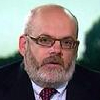Bond yields are moving higher and stock markets are churning — at least in part due to worries that the economy is going to overheat. Faced with this environment, the Federal Reserve will counter with a message designed to convey a sense of calm, stressing that inflation remains in the central bank’s comfort zone and its plans to gradually raise interest rates is the best way forward.
“The U.S. economy is very late in the economic and financial market cycle, with investors looking for a reason to de-risk. [Fed] Chairman [Jerome] Powell is very attuned to markets and will be loath to take any action that may put markets into a tailspin” said Luke Tilley, a former economist at the Philadelphia Fed, and now chief economist at Wilmington Trust.
Fed officials, in a two-day meeting ending Wednesday, are expected to leave interest rates on hold and signal no change to a tightening path of two more rate hikes in 2018. There is no press conference or formal update to their economic forecasts at this meeting.
U.S. consumer prices firmed notably in March as the drag on prices from lower cell-phone service dropped out of the calculation. The Fed’s favorite inflation gauge, the personal consumption expenditure price index, rose to a 12-month rate of 2%, hitting the Fed’s target for the first time in a year.
Read: PCE could be prelude to faster rise in U.S. interest rates
Jan Hatzius, chief economist at Goldman Sachs, thinks core PCE inflation will show stability through early next year and rise to 2.2% by the end of next year. He sees the Fed hiking rates to a range of 3.25%-3.5%.
The biggest challenge for the Fed will be to acknowledge this increase in the statement without indicating that they are concerned about inflation running higher, Tilley said.
He said the Fed will accomplish this by stressing that longer-term inflation expectations remain low.
The Fed will release the policy statement at 2 p.m. Eastern.
Longer-term TIPS breakevens, near 2.1% are still well below the Fed’s comfort zone of 2.25%-2.75%, Tilley said.
Nathaniel Karp, chief U.S. economist at BBVA, said the Fed made clear in March that it was prepared to tighten faster if necessary, so it does not need to overhaul its statement this month.
“The turn of the wheel happened between December and March,” Karp said.
Read: Fed raises interest rates, sees three rate hikes this year
While the Fed will have to acknowledge that growth in the first quarter slowed to 2.3% annual rate in the first quarter from the 2.9% rate in the fourth quarter, the central bank will make sure to add hints that this slowdown is temporary, said Christopher Probyn, chief economist at State Street Global Advisors in Boston.
The Fed isn’t likely to make major changes to its view that interest rates remain accommodative for now and that risks are roughly balanced, Probyn said.
“I can’t see any reason to create any uncertainty. I would say they are on course, and it is pretty well understood. If there is no need to raise an issue, then why do it,” Probyn said.
The Fed hiked rates in March and has targeted two more hikes this year. While initially skeptical, the market is now on board and is pushing yields higher. Many investors think the Fed will ultimately move rates up three more times this year. The market has priced in over 40% chance of such a move.
The 2-year note yield hit 2.5% TMUBMUSD02Y, -0.16% for the first time since 2008 on Wednesday. And the 10-year Treasury note TMUBMUSD10Y, +0.00% hit 3%. Stocks DJIA, -0.19% have seen much more volatility VIX, -0.58% so far this year than occurred over all of last year.
Despite this, financial conditions remain accommodative, Karp said.
“It will be just a slow and quiet meeting. They want to keep everything relatively optimistic and not make too much of the movement in financial assets,” he said.
James Glassman, economist at JPMorgan Chase, said the market is generally on board with the game plan the Fed has laid out of slowly moving toward a 3% fed funds rate.
“I don’t think a few upward surprises on inflation is going to make them panic. I don’t think they will be as jumpy as the market might be,” he said.
The Fed is just trying to make the nine-year-old economic expansion last, he said.
As long as the fed funds rate is below 3%, the Fed has its foot on the gas, he said.



